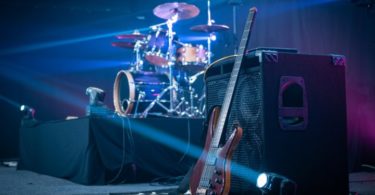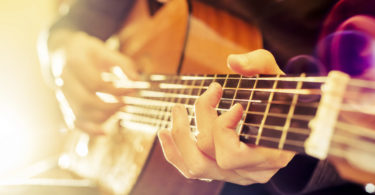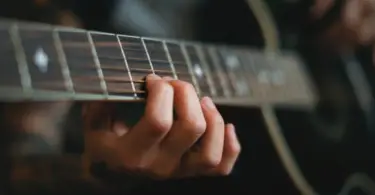So you’re looking for a bass guitar methods book and the internet has hundreds. Maybe everyone you know recommended a different one, or worse yet, you don’t know any other musicians and are paving your own way.
So yeah, we’ve been where you are. No one showed us the way except a few old guys at a local music store. While that advice was invaluable, now we have the internet and can showcase the best of the best.
We looked at hundreds of choices and thought about what kind of advice we wish we’d had when we were first starting out. In fact, we’ve been playing for years now and learned quite a few things the hard way, but you don’t have to follow the same path.
Keep reading to find out more about what the world of bass guitar has to offer you in terms of guidance and expertise, without ever having to leave your living room.
The good news is that we combed through hundreds of options and decided on one that’s head and shoulders above the rest. It’s got everything you need to be playing like a pro in no time.
Covers how to hold the bass, some simple finger techniques, and tuning to a progressive series of exercises in basic music theory and note reading.
How to Choose a Method Book
A lot of methods books suck. There, we said it. Now that’s out in the open, let’s talk about how to choose a methods book that will get you on your way.
You need something simple, but that gets you right into playing simple songs so that you have a chance to practice what you are learning.
While that might seem obvious, there are lots of books out there that heavily rely on theory up front, forcing you to learn difficult musical notations and ideas, but don’t just get you playing.
Eventually, you’ll want some theory, but the important thing is to play. A lot. The best methods books get you playing simple things, and probably have CDs to play along with, or some other way to integrate your skills into practice.
The book also needs to be logical, progressing to different skills at a clear and obvious pace. Ideally, it can be followed with or without a teacher.
-

$29.99$20.82Check on AmazonCovers how to hold the bass, some simple finger techniques, and tuning to a progressive series of exercises in basic music theory and note reading.
06/29/2025 03:05 am GMT -

$29.99$16.81Check on AmazonIt goes over the basics of techniques, scales, notations, and the importance of timing.
06/29/2025 04:09 am GMT -

$22.99$17.31Check on AmazonBook teaches you how to blend with a band, and essential techniques.
06/28/2025 06:03 pm GMT -

$26.99$20.34Check on AmazonProvides instruction in music theory with concepts and pictures.
06/28/2025 08:07 pm GMT -

$19.99$14.60Check on AmazonThis book will walk you through the basics so that you are ready.
06/28/2025 11:21 pm GMT -
 $16.95Check on Amazon
$16.95Check on AmazonOffers a range of advice in technique, improvisation, reading, and rhythm.
06/29/2025 01:18 am GMT
Advantages of Using a Method Book
Ok, you bought the bass and your grand plan is just to play along to your favorite song and hope for the best. After all, the bass is only one note at a time, right? How hard could it be?
If you want to wallow around in mediocre land for a long time, then sure, try that method. Maybe you’ll find that you’re one of the rare talents with a gift for music that surpasses anyone else.
Probably not. The bass is an instrument and like any other instrument, machine, or tool, it requires some training to use well. You can get a teacher, but even the teacher is going to bring some kind of methods book with them to your lesson.
A methods book will present tips and tricks to playing the bass well, and you can always go back to refer to information you’ve already covered.
What to Look For
All music method books present information in a slightly different way. It’s important to think about what you need before investing.
Some get heavy into music theory. This can be a valuable tool if you plan to play in improvisation bands or want to learn more about music itself.
Some bass methods provide tablature upfront. This style of music notation is particular to stringed, fretted instruments and is a kind of number method.
Others use traditional music notation in the bass clef. Others use a number style so that you don’t have to actually be able to read music.
Some of the books will have CDs or other music accompaniments, either to check for accuracy or to play along with.
With CDs you can hear exactly how the song is played so that you know what you are playing is accurate, or you can play along with another track to give you the feel of playing in a band.
So think about what you want to do with your bass, and how you want to learn to read notation. Make sure you know how much theory you want upfront.
How to Use a Method Book
No matter how good the book is, if you don’t open it, it isn’t going to work. With that in mind, decide how much you want to practice each day and get in a good routine.
If you only open the book once a month, then it’s going to disappoint you. You need to set your goals and stick to them.
On the other hand, it isn’t helpful to rush. If you don’t have a teacher it can be hard to pace yourself. We all want to accomplish our goals immediately, but going through the book as quickly as you are able isn’t going to help you either.
Slow down and take your time. Make sure to master each section before moving on to the next so that your skills build and you can effectively use them.
Here’s the final competition:
Our Recommendation:
Hal Leonard Bass Method Complete Edition

Credit: Amazon.com
The Hal Leonard Bass Method Complete edition is the full series of bass method books for levels 1, 2, and 3.
You can get it with CDs so that you know what the songs sound like and can check your progress. For around $20 you can have a complete system that will take you from beginner to competent bassist.
Covers how to hold the bass, some simple finger techniques, and tuning to a progressive series of exercises in basic music theory and note reading.
This particular set of books is extensive and begins right away with teaching the student to sight read. The fundamentals are explained clearly and there are enough exercises to gain competence in each skill before moving to the next.
The text also associates traditional music notation with tablature later on in the book. The CDs add to the motivation by offering interest and ways to practice. The tracks are in different music styles.
It does make use of classical fingering, rather than modern electric bass fingering. These skills are great for traditional players and will transfer well to bass technique.
The very beginning of the book goes over the basics, how to hold the bass, some simple finger techniques, and tuning.
From there it’s a progressive series of exercise first teaching you basic music theory and note reading. It should set you up to be a solid player whether in a band, or jam and improvisation.
One downside of the book is that you really need to work through everything thoroughly, as this book relies on music theory to progress through the lessons.
The CDs are very helpful, but there is no visual instruction or extra tips. They are only for playing along. It is also light on illustration, and so players with less expertise might have to work a little harder to get the right technique.
If you aren’t interested in learning music theory, then this book might not be the right one for you, though we would suggest giving music theory a try, as this will give you a solid foundation for playing.
Other Books to Consider:
There were a few other method books in consideration. Each one brings different positives and is worth looking at.
Music Theory for the Bass Guitar

Credit: Amazon.com
This book takes the music theory approach first and can give you a good foundation in theory to get your bass playing to the next level.
It relies a lot on fretboard notation rather than solely traditional musical notation, and so this will get you started right away. Ariana Cap, the author, has a comfortable way to teach theory.
The book is laid out with easy explanations, practice exercises, and tests designed to get your brain thinking clearly. It’s probably not for a pure beginner, but one who needs an extra boost in skills.
Bass Guitar for Dummies

Credit: Amazon.com
This is a great reference book for those starting out. It goes over the basics of techniques, scales, notations, and the importance of timing.
It goes over the basics of techniques, scales, notations, and the importance of timing.
Topics are discussed in a clear and orderly fashion. It makes use of music notation and TAB so that you don’t have to know music theory to start learning right away.
Another good thing about this book is that if you play by ear, then most of the music is also available online. You can listen and learn in that manner if it works better for you.
All in all, it’s an approachable style of instruction, and will cost you only about $20. Find it here.
Simplified Sight Reading for Bass

Credit: Amazon.com
This option focuses a lot on rhythm, which is an essential part of sight-reading. This book teaches you how to blend with a band, and essential techniques.
Book teaches you how to blend with a band, and essential techniques.
It works on helping you see and understand rhythmic patterns and really get a feel for those patterns.
The CD that comes with the book is an accompaniment for the first example of each lesson and helps give you extra practice on the examples on each page.
It teaches rhythm reading and pitch reading separately to help you master both.
The Complete Electric Bass Player Book 1 (and 2 and 3)

Credit: Amazon.com
Chuck Rainey’s book is a step-by-step approach to electric bass. It provides instruction in music theory with concepts and pictures.
Provides instruction in music theory with concepts and pictures.
It also teaches proper hand theory, to get you off to the best start possible. While it is good for beginners, it isn’t good for anyone who wants to learn to play bass without getting into any complicated theory.
However, if you can put in the time with practice, then you can progress quickly through the book and see results.
Jazz Bass

Credit: Amazon.com
For something a little different, Ed Friedland’s book Jazz Bass will walk you through some basic Jazz methods.
This book will walk you through the basics so that you are ready.
It’s a good idea to study a wide range of music methods and Jazz theory can really expand your ability for improvisation and jamming with a band. This book will walk you through the basics so that you are ready.
101 Bass Tips

Credit: Amazon.com
This book by Gary Willis has something for every player. It’s a cheaper investment at around $10, though it’s not actually a theory or a practice book. Instead, it offers a range of advice in technique, improvisation, reading, and rhythm.
Offers a range of advice in technique, improvisation, reading, and rhythm.
Instead, it offers a range of advice in technique, improvisation, reading, and rhythm.
It would be a great reference book for someone who doesn’t want a lot of long practice and exercises from a book, and instead is looking for a book to offer simple advice for improving skills on the fly.
This is not the book for you if you require step-by-step instruction in your methods book.









Start the discussion at talk.hearthemusicplay.com